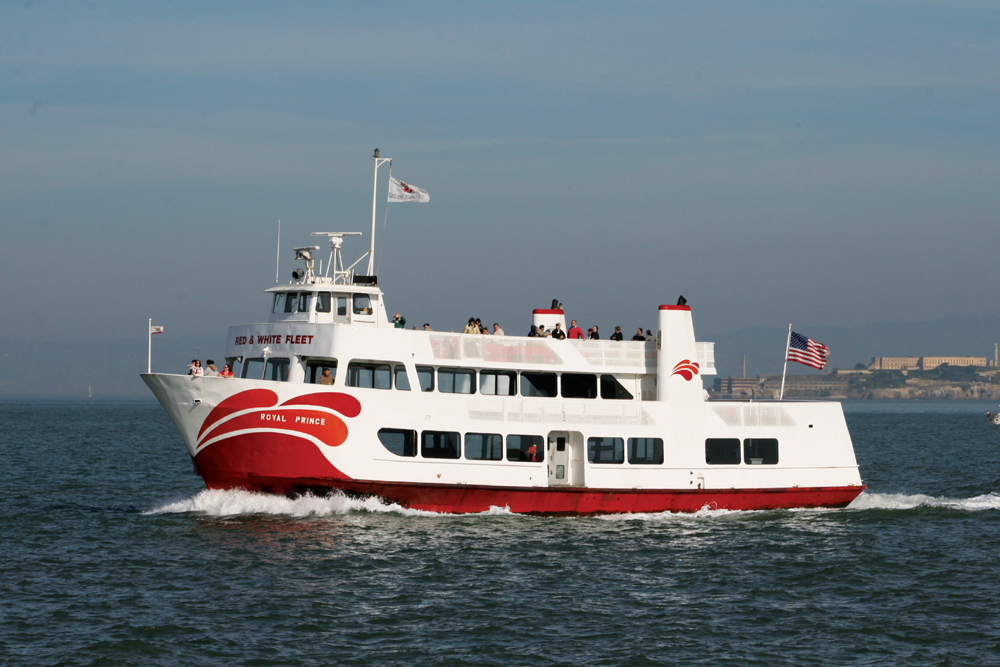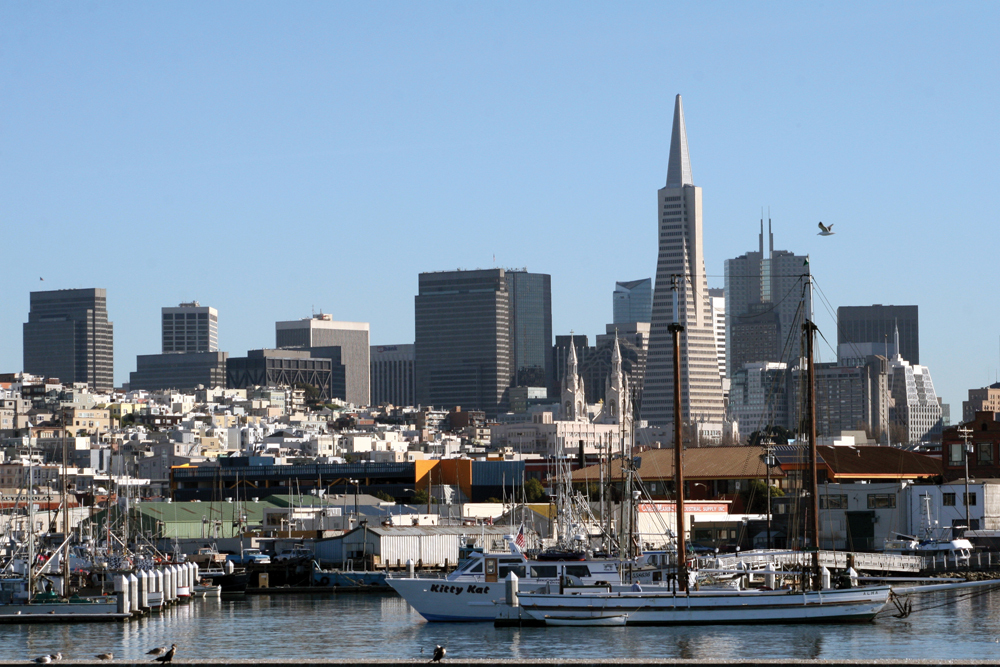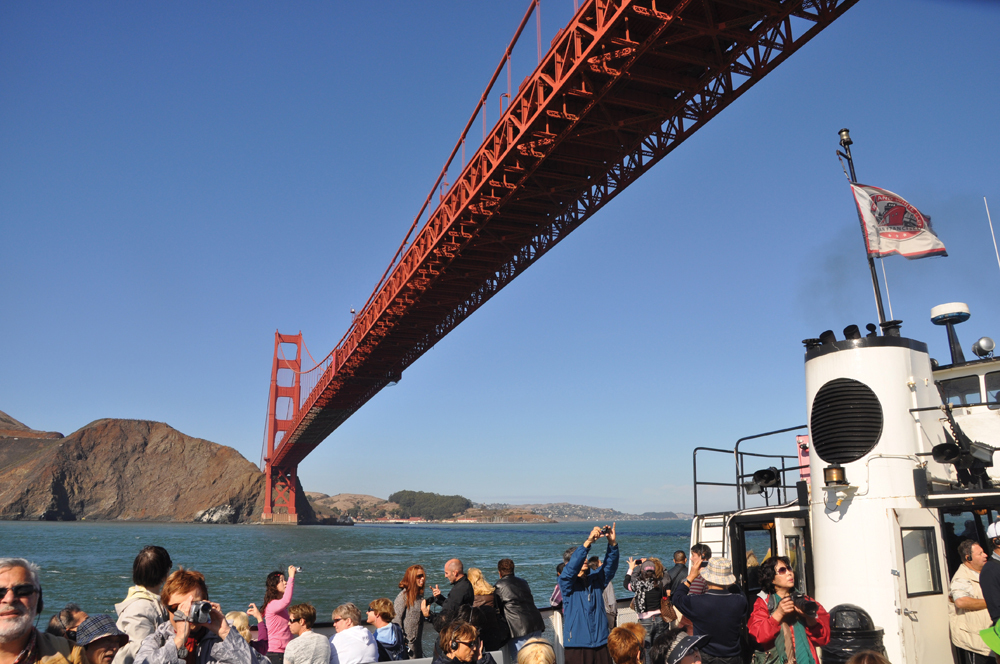Biodiesel Sets Sail




PHOTO: RED AND WHITE FLEET
June 14, 2011
BY Bryan Sims
Encountering red tape isn’t new for alternative fuels such as biodiesel on their journey to acceptance as viable, on-road fuel. The same could be said for its off-road applications, specifically in maritime use. Perhaps no one understands the trials and tribulations of biodiesel better than Randall von Wedel who, in the early 1990s, was instrumental in helping biodiesel become accepted by boaters in the San Francisco Bay area.
Recognizing biodiesel’s inherently higher-quality air and water characteristics, von Wedel, a principal scientist at CytoCulture International and avid boating enthusiast, recalls a pivotal point in California where he saw an opening for marine operators to—by increasing their use of biodiesel—enhance performance in marine engines and reduce their carbon footprint. In 1993, the California Air Resource Board mandated that all high-sulfur No. 2 off-road diesel fuel be switched to what was called low-sulfur, low-aromatic, which inevitably forced oil companies to lower levels of aromatic compounds, such as benzene, in the fuel, von Wedel says. The switch also inevitably caused the gaskets and seals (or elastomers) in boat engines to shrink, he says, because they were designed to swell in the presence of those aromatic compounds found in high-sulfur diesel fuel. Shortly after CARB imposed the switchover, von Wedel and his colleagues published empirical data supporting the fact that biodiesel not only restored lubricity in marine engines, but, because of its solvent properties, allowed the membranes to swell up again. Von Wedel was vindicated.
“That launched biodiesel in California because there was so much publicity associated with using biodiesel in marine engines then,” von Wedel tells Biodiesel Magazine. “We were in the right place, at the right time and with the right fuel. I didn’t design it—it just happened.”
Since that time, von Wedel’s pioneering efforts with biodiesel in the Bay area resonated to other fleet operators and boat owners, such as the Red and White Fleet, which was interested in using biodiesel. As it turned out, Red and White became the first commercial adopter of biodiesel in ferry vessels in the Bay area. Since 2006, family-owned Red and White company has been using a B20 blend in its passenger vessels with no issues directly related to engine operability, according to Joe Burgard, director of operations for Red and White.
“We did have some bacteria growth early on, but we didn’t attribute it directly to the biodiesel,” Burgard says. “I think early on there was a lot of inconsistency on the quality standards of biodiesel, but since we adopted it there have been no issues.”
Not only did ferry fleet operators in the Bay area express immense interest using biodiesel, but it also proliferated northward into Washington. In 2004, the Washington State Department of Transportation’s Ferry Division conducted a pilot biodiesel fuel test over a four-month period using a B20 blend of soy biodiesel in three of its vessels. Although the operational issues were challenging, according to Paul Brodeur, director of vessel maintenance, preservation and engineering for the ferries division, the test was successful in that it helped him gather important information that would inspire a 12-month biodiesel pilot study in 2008 using blends of B5, B10 and B20 with ULSD in three of its vessels—the Issaquah, the Klahoya and the Tillikum. Currently, Brodeur says 15 of the 20 vessels run on a B5 blend, amounting to about 17 million gallons of biodiesel consumed annually.
“When that pilot test concluded in 2009, we went to the state legislature for some funding for ongoing biodiesel use,” Brodeur says. “We were later funded at a 5 percent level for the incremental cost of the biodiesel, and that was based on availability.”
Today, many marine operators across the country are either exploring the use of or are using biodiesel in their marine engines. For example, the Virginia Port Authority expanded its voluntary program in January of using B5 with ULSD in its diesel-powered machines owned by the VPA’s operating company, Virginia International Terminals Inc. Also, the U.S. Navy, the largest consumer of diesel fuel in the country, is studying the long-term feasibility of integrating biodiesel and other renewable forms of biofuel in its fleet of ships to reduce its carbon footprint, NOx and SOx emissions and achieve a sustainable goal of buying domestic product.
Things to Keep in Mind
Several studies have been conducted to find which biodiesel blends interact best with marine engines. Marine engines are equipped to perform efficiently without incident on B5, but issues can occur when blends exceed that amount if the proper precautionary measures aren’t met. Two of the prominent issues that arise when ship owners consider using blends above 5 percent include incompatibility with fuel filters, gelling and potential microbial growth in older fuel tanks. Of course, operational deficiencies related to biodiesel greatly depend on the size and duty-cycle of any given ship, Brodeur says.
Advertisement
Advertisement
“We’re only burning B5 so the blend ratio is pretty low, so we wouldn’t expect to have any issues,” Brodeur says. “When we did our pilot testing, we started having filter issues and some gelling issues occurred when we ran on B20, especially in colder weather.”
Brodeur recalls suspending the use of biodiesel when his B100 product stored in stainless steel totes began to gel when it was subject to temperatures of 20 degrees Fahrenheit. That was when his team manually blended their product, compared to now where they employ in-line blending systems at their fueling sites. Brodeur advises keeping a close watch on fuel clogging that can occur when B20 is used.
“Operationally, the biggest thing we experienced [with B20] was some premature filter clogging, so you have to stay on top of cleaning out your fuel transfer filters and your fuel purifier,” Brodeur says. “Issues like these happen at a much slower rate with B5 or B10.”
Another aspect to be mindful of, according to Brodeur, is to actively participate in proper fuel management practices by using additives or biocides to ensure fuel tanks are clean to reduce the fuel-water interface that can often create an environment suitable for microbial growth, commonly known as “diesel bugs.”
“If we get an active population of microbial growth, then we’ll do a higher dosage to kill them, whether it is diesel fuel or a blended product, then we find ourselves in good shape,” Brodeur says. “It’s not more or less indicative of whether you have a blended product or not. It’s a marine environment where you have variables that can cause microbial growth other than biodiesel, like the tanks that are integral with the hull, varying temperatures, tanks sweat, condensation and so forth.”
Stricter Emission Standards Ahead
With more oceangoing vessels in use, and stricter fuel and air emission regulations in both domestic and international waters expected to go into effect in the next few years, biodiesel will play a progressively greater role. This was evidenced when, in October 2008, the member states of the International Maritime Organization agreed to amend the International Convention for the Prevention of Pollution From Ships (MARPOL) Annex VI, adopting new tiers of NOx and fuel sulfur controls. The most stringent of these new emission standards apply to ships operating in designated Emission Control Areas, including the newly-designated North American ECA.
The revised MARPOL states that as of 2015, ship operators that trade in emission control areas will be required to burn fuel with less than 0.1 percent sulfur (1,000 ppm), which will help reduce SOx and particulate matter by more than 85 percent from today’s levels, according to the U.S. EPA. The fuel sulfur limit allowable under MARPOL today is 10,000 ppm.
Kevin Reynolds, senior marine engineer for The Glosten Associates Inc., an engineering and consulting firm based in Seattle, authored a report on exhaust gas cleaning systems used in ships for The Ship Operators Cooperative Program, which was released in February in light of the new MARPOL regulations that are set to go into effect. Reynolds says the study was designed to guide ship operators when faced with the dilemma of switching to expensive distillate fuel in ECA or install EGS and continue to burn high-sulfur, heavy fuels. He adds that the use of biodiesel in conjunction with ULSD is a solid option for ship operators looking for ways to comply with impending sulfur emissions as prescribed by the amended MARPOL requirement.
“Biodiesel in our view is certainly a low-sulfur option,” Reynolds says. “The challenge for these large oceangoing ships is that it’s going to be very expensive relative to residual fuel.”
Advertisement
Advertisement
Reynolds continues, “One of the biggest challenges in switching over to biodiesel is that it essentially scrubs the fossil fuel residue off your storage tanks and it tends to plug your filters, hence making the switchover process fairly painful. There’s still some interest in using biodiesel by ship owners, but there needs to be continued pilot projects to get past compatibility issues, along with increased supply, as continually switching between biodiesel and fossil-based fuels could create unwanted incompatibility issues.”
As for NOX, the amended MARPOL requirements will mandate that all marine Tier III engines will have to install some form of aftertreatment technology by 2016. Von Wedel admits there while there may be a slight increase in NOx when using biodiesel, it would be eliminated with the utilization of both biodiesel and aftertreatment technology to comply with MARPOL NOx requirements.
“Biodiesel has good potential to assist in the role, but it’s going to have to be in conjunction with proper additives or with aftertreatment, which will be very challenging for boats,” von Wedel says.
“Boats aren’t set up for that and there’s no market right now to build equipment to retrofit a boat or ferry to accommodate those stringent standards. But, in principle, it could be done.”
If You Build It, They Will Deliver
As biodiesel usage increases by ships near ports and harbors, one might ask: is there an infrastructure at ports to support installation of fuel terminals to meet that demand? The answer is no, especially in the Bay area, according to Kent Bullard, a BQ-9000 consultant and biodiesel quality assurance consultant for Little Rock, Ark.-based biodiesel consulting firm Lee Enterprises Inc.
“There really isn’t any access, at least here in Southern California, to biodiesel unless if you’re having a fuel company come and service your boat by wet fueling then you can get access to fuel if you order it,” Bullard says. “If we could have biodiesel back at Ventura Harbor at the fuel dock, it would start moving again, especially now that biodiesel is becoming price competitive with diesel now.”
Bullard cites California’s ongoing underground storage issue as one of the main culprits holding down the build-out of an infrastructure at ports for greater access to biodiesel in the state. In 2009, California’s Water Resources Board expanded its approval for storing biodiesel blends in underground tanks from the existing B5 limitation to up to B20. A 25-year-old California law requires the storage of any chemical in underground tanks to be tested and independently certified as being compatible with the tank materials, Bullard explains. With only B5 blends having been tested, the water board approved a three-year emergency variance to allow higher blends up to B20 in double-walled tanks and piping that currently meet requirements for petroleum-based fuels.
“You have to provide a letter from all of the tank component manufacturers showing biodiesel compatibility for getting above B5 underground,” Bullard says. “Then you can apply for, and hopefully your local authority will grant you, a variance, which could take about a year and a half until you receive approval.”
In Washington, Brodeur faces the challenge of trying to get consistent access of biodiesel. Currently, the Washington ferries that traverse the Puget Sound region under Brodeur’s watch are all fueled from three different locations. One, he says, is a fuel terminal that delivers blended fuel by boat (also called wet fueling) and the other is equipped with in-line blending capabilities. The third is in the process of having in-line blending equipment installed at the fuel pier in Seattle.
While Brodeur admits that biodiesel is considered a boutique fuel in many port hubs across the country with limited to no state or provincial backing to support the build-out of an infrastructure for more widespread availability, he doesn’t have any regrets for taking a chance on using biodiesel during its pilot studies.
“As long as we continue to receive the necessary funding to support the program, I’m committed to moving the fleet forward with higher biodiesel blends, up to B20, because that’s what we tested and that’s what we know will work,” Brodeur says. “Beyond that, I think we would need to go into more of a pilot project if we were considering blends higher than B20. Certainly, B20 is doable and if we’re funded to that level, I’m committed to make that happen.”
Author: Bryan Sims
Associate Editor, Biodiesel Magazine
(701) 738-4974
bsims@bbiinternational.com
Upcoming Events





